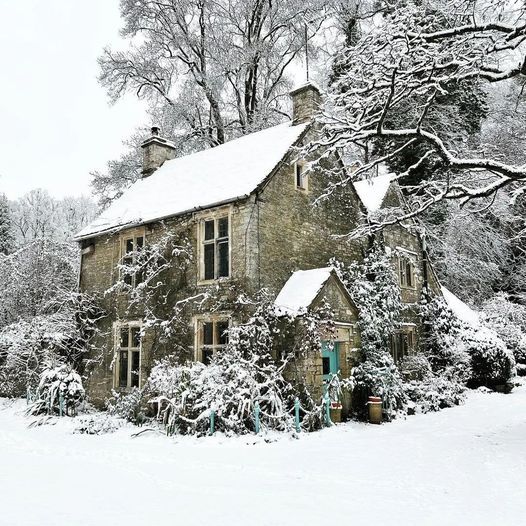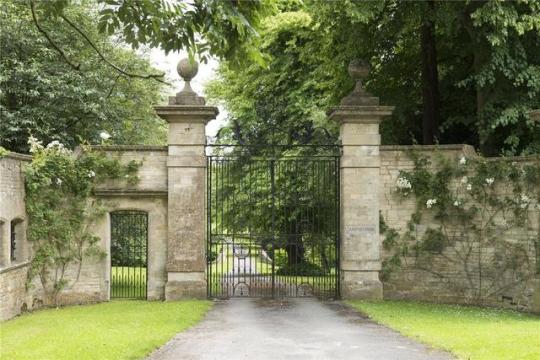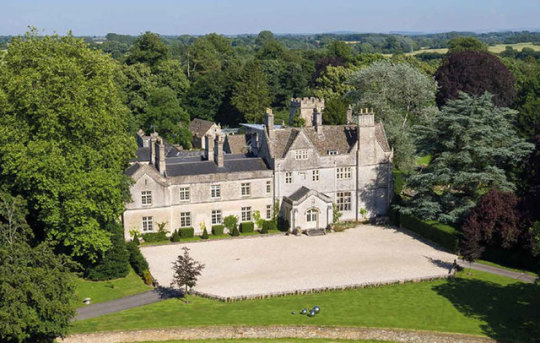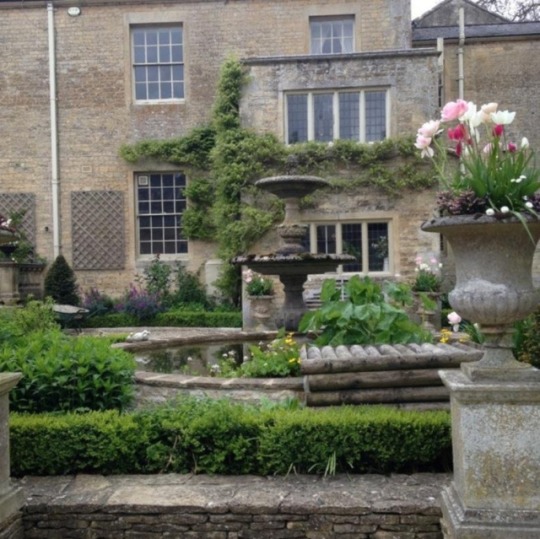#Ampney Park
Text

The former hunting lodge at Ampney Park personifies rural England
#Ampney Park#Gloucestershire#The Cotswolds#hunting lodge#stone cottage#winter#snowfall#rural England#Christmas
1K notes
·
View notes
Text
Pentecost

♫ Music Notes
Pentecost is one of the great festivals of the church year, its importance coming only after Easter and Christmas. During the prelude we will hear Invention on Veni Creator, something of an improvisation on the 9th century plainsong tune Veni Creator Spiritus (found at H-504 in the Hymnal 1982). “Come Holy Ghost, our souls inspire” has a long and close association with services of ordination, being sung right at the point where the Bishop is about to lay hands on the ordinand (BCP p. 533). It has also been used in English coronation rites since the accession of Edward II in 1307. This setting is by Flor Peeters (1903-1986), the prolific Belgian composer, organist, and teacher. The version we are singing for our processional hymn, “Come Holy Ghost, our souls inspire” (H-503), was written to be sung in alternation between the bishop and congregation by John Henry Hopkins, Jr. It was first sung by his father at the consecration of a missionary bishop in 1865.
The second piece in today’s prelude, Komm, Gott schöpfer, Heiliger Geist (Come, Holy Ghost, our souls inspire) is taken from a German adaption of the Latin tune Veni Creator Spiritus. It appeared in 1524 with Luther’s translation of the Latin text. This setting is by Johann Pachelbel (1653-1706), one of the most important German composers in the generation before J. S. Bach. Most of his music was written for organ, and everyone knows his famous Canon in D. His style is described as having great sincerity and sweetness. As was common in his era, he served in both churches and the courts in Germany and Austria. His music was highly admired by Bach, and at one point he was Johann’s older brother’s music teacher. Interestingly, Pachelbel's name is commonly mis-pronounced in the USA. In Germany and the rest of Europe, the emphasis is on the second syllable (pac-HEL-bel), with the last syllable clipped to sound almost like the English word "bull." The postlude, Ricercar pro Tempore Festis Pentecostalibus, by the German Baroque composer Johann K. F. Fisher (1656-1746) is based on the same melody.
Our sequence hymn, “Come down, O Love divine,” H-516, is closely linked with our Gospel reading, and Jesus’ promise to send the Advocate, the Spirit of Truth, to abide with us forever. The original 15th c. Italian text, “Discendi, amor santo,” was by Bianco da Siena, and was translated in the 19th c. by Richard Littledale reflecting the idea that the time of the “Golden Age” of the faith was in the Middle Ages. A close comparison of the themes and images of this text can be found in the Charles Wesley hymn, “O thou who camest from above the fire celestial to impart, kindle a flame of sacred love upon the altar of my heart.” (H-704) The tune that is sung around the English-speaking world to H-516, Down Ampney, is one of Ralph Vaughan Williams’ true masterpieces. The tune name was given because the village of Down Ampney (near Gloucestershire) was where Vaughan Williams was born in the Vicarage where his father was priest. During WWII the local airfield saw a lot of action. The church has a stained glass window commemorating the planes that flew from the airfield for the Battle of Arnhem in 1944.
During Communion the choir will sing O Holy Spirit, Flowing Light, arranged by Mary Bringle from the music of Hildegard of Bingen (1098-1179). Hildegard’s music has become very popular in recent years, even including arrangements heard on popular radio stations and the dance floor of the disco. She is one of the most interesting women in history: abbess, theologian, preacher, musician, poet, doctor and pharmacist. She is the first woman composer for whom we have her actual music. As a mystic and visionary her ecological and holistic spirituality speaks prophetically to our time.
As we celebrate Pentecost and the coming of the Spirit, reflect on these other words of Hildegard:
“A musical performance also softens hard hearts, leads in the humor of reconciliation, and summons the Holy Spirit.”
“So remember: just as the body of Jesus Christ was born by the Holy Spirit from the spotless Virgin Mary, so too the singing in the Church of God’s praise, which is an echo of the harmony of heaven, has its roots in that same Holy Spirit.”
“Underneath all the texts, all the sacred psalms and canticles, these watery varieties of sounds and silences, terrifying, mysterious, whirling and sometimes gestating and gentle must somehow be felt in the pulse, ebb, and flow of the music that sings in me. My new song must float like a feather on the breath of God.”
The Rev. Dr. David Kerr Park, Director of Music
1 note
·
View note
Text
This Week Music
♫ Music Notes
The Fuge in G-minor is by the German organist Gottlieb Muffat (1690-1770), son of an important composer, Georg Muffat. Gottlieb first studied under his father, and then the famous teacher Johann Fux. He was considered the best keyboard composer after Bach. Handel borrowed some of his themes for several works. An interesting feature of this fugue is its descending chromatic harmonies. You can hear a simple and direct performance online at http://www.youtube.com/watch?v=Jz8R8jLMJRA.
Our opening hymn, “Come down, O Love divine,” H-516, sung to the tune Down Ampney, one of Ralph Vaughan Williams’ true masterpieces. The tune name was given because the village of Down Ampney (near Gloucestershire) was where Vaughan Williams was born in the Vicarage where his father was a priest. During WWII the local airfield saw a lot of action. The church has a stained glass window commemorating the planes that flew from the airfield for the Battle of Arnhem in 1944.
For today’s offertory anthem the choir will sing Notre Père, by the French composer and organist Maurice Duruflé (1902-1986). This setting of the Lord’s Prayer will be sung in French. It was originally written in 1977 for unison male choir and organ and later reset for 4-part mixed choir a capella. The text is set in a straight-forward manner, with simple homophonic chords in which all four parts are singing the same words at the same time (very much like a hymn). Duruflé studied at the Conservatoire de Paris, winning prizes in organ, harmony, piano accompaniment, and composition. He was a close friend of Vierne and Poulenc. His most famous choral work was his 1947 Requiem for choir, soloists, orchestra, and organ.
During communion, we will sing the hymn “Forgive our sins as we forgive” (H-674), which uses the American folk tune Detroit. Earlier we will hear a setting by the American composer and arranger G. Winston Cassler (1906-1990), Prelude on Detroit. The melody was originally published in the 1820 Supplement to Kentucky Harmony.
What makes folk hymns different from most others is the way in which they are transmitted. Folk hymns come through the oral tradition and are passed on to others who repeat them without having an original official published version with a known composer. Many early American folk hymns had their roots among settlers from the British Isles. Some were originally secular songs adapted for singing on the frontier. A very large percentage of these used a five note (or pentatonic) scale, which gave them a unique harmonic feeling.
Over time music teachers formed “singing schools” to teach both music notation and group singing, and the melodies were written down and published. Early hymnals used shaped-notes that followed a kind of do-re-mi system where each note was also given a different shape. Among the most famous of these collections were Southern Harmony (1835), The Sacred Harp (1844), and Wyeth’s Repository of Sacred Music, Part Second (1813).
Many of these early American folk hymns have become very popular in recent hymnals across all denominations. Some you would likely recognize include: H-675 Bourbon, H-583 Consolation, H-636 Foundation, H-686 Nettleton, and H-238 Holy Manna.
Our closing hymn, “God is Love, let heaven adore him” (H-379) is set to the tune Abbot’s Leigh, by Cyril Vincent Taylor (1907-1992), who was canon at Salisbury Cathedral. He wrote this in 1941 for the text “Glorious things of thee are spoken” (H-522 & 523). At that time he was working in the wartime headquarters of the religious broadcasting department of the BBC in Abbot’s Leigh, hence the name. This was shortly after the Battle of Britain, when German bombers terrorized the people of England and destroyed Coventry Cathedral. Taylor wrote Abbot’s Leigh as a substitute for the familiar tune Austria—unthinkable to use in England as it also served as the German national anthem (Deutschland, Deutschland, über alles). It was an immediate success in England and has become steadily more popular in the United States.
Finally, at the postlude, we will hear the Prelude and Fugue in F-minor, from the collection Ariadne musica by the German (Bohemian) composer and Kappelmeister Johann Caspar Ferdinand Fischer (1656-1746). He was considered one of the best keyboard composers of his day. Not a great deal is known about his early training. He served the court at Baden for some 60 years. He seems to have been influenced by Jean Baptiste Lully and Georg Muffat, and he was responsible for bringing a French influence to the German baroque. Fischer possessed an exceptionally varied musical spectrum, reflecting the principal styles current in his time: arpeggios and virtuoso scales in the Italian style, overtures in the French, and melodies with a contrapuntal emphasis in the best German tradition.
The Ariadne musica was first published in 1702. The main part of the collection is a cycle of 20 preludes and fugues in different keys, and is considered an important precursor to J. S. Bach's The Well-Tempered Clavier, which has a similar structure. Both Bach and Handel knew Fischer’s work and even borrowed themes from it. Some of Fischer’s music has even been thought in the past to have been by Bach. By contrast, Fischer’s pieces are quite short and written predominantly using long note values, while Bach’s fugues are much more complex, with dense counterpoint and are also much longer. Fischer’s collection also included a series of ricercars for the Church year based on chorale melodies (I often use them for postludes on the major festivals.) If you are interested in listening to the whole collection (about 40 minutes) there is a delightful performance on a German pipe organ found online at http://www.youtube.com/watch?v=MYgJFQZU264.
The title of Ariadne musica refers to the Greek myth in which Theseus finds his way out of Minotaur's labyrinth using a ball of thread that Ariadne, daughter of King Minos of Crete, gave him. Similarly, the music in the collection can be said to guide the listener through a labyrinth of keys. Fischer also used Greek mythology to name the pieces in another large scale music collection of his, Musikalischer Parnassus.
The Rev. Dr. David Kerr Park, Director of Music
0 notes



